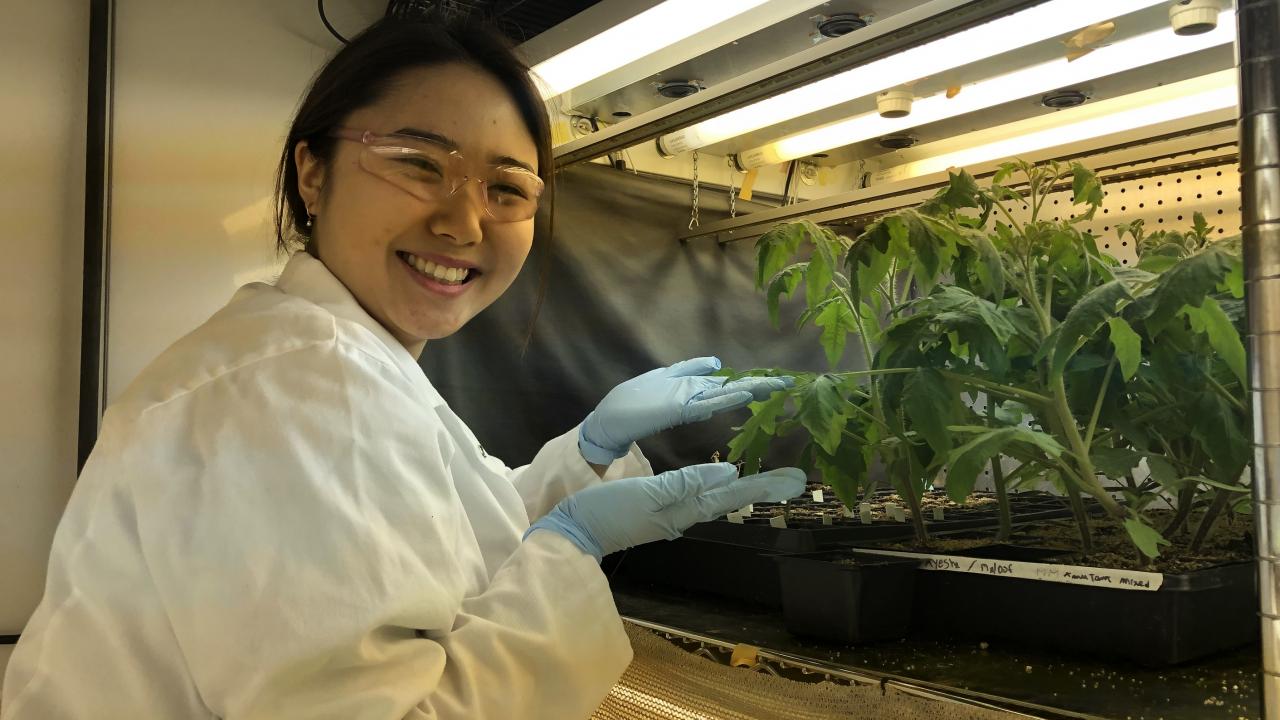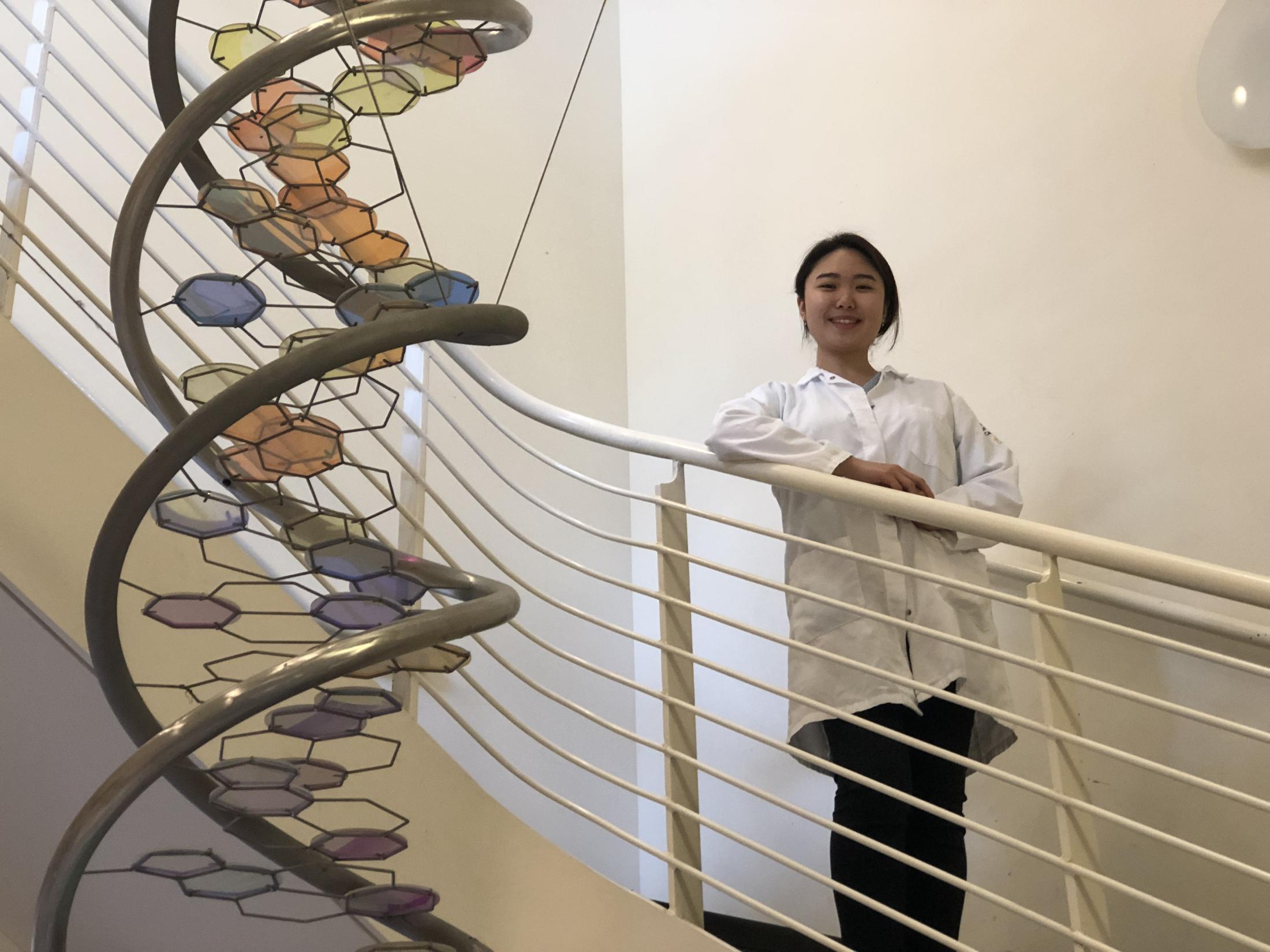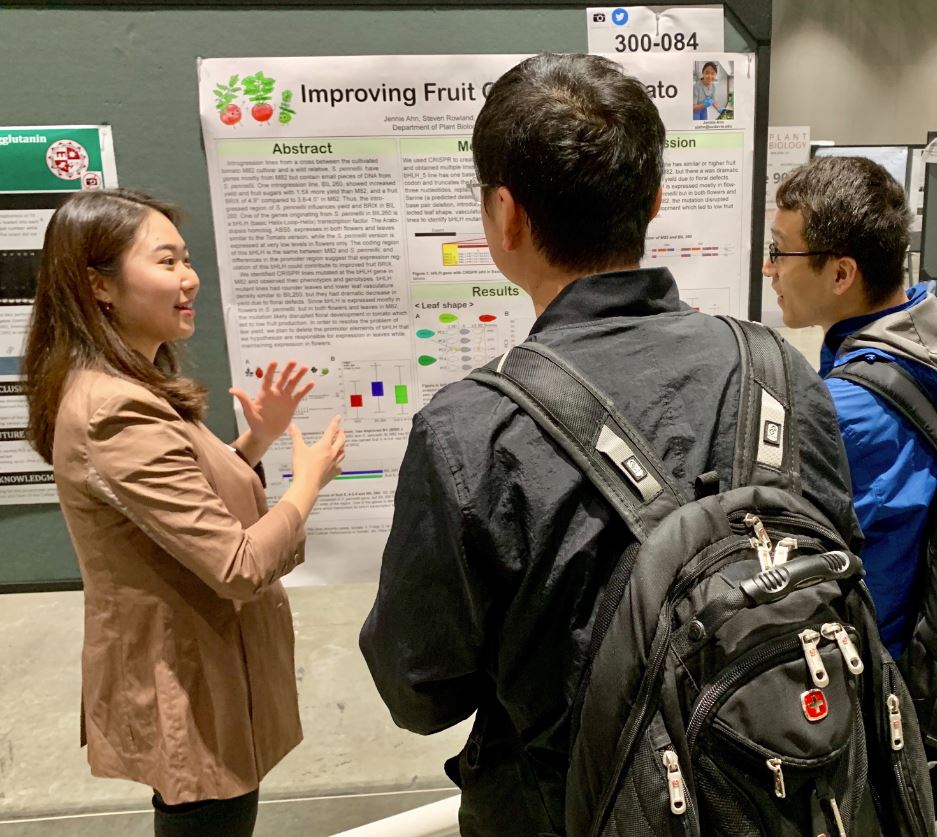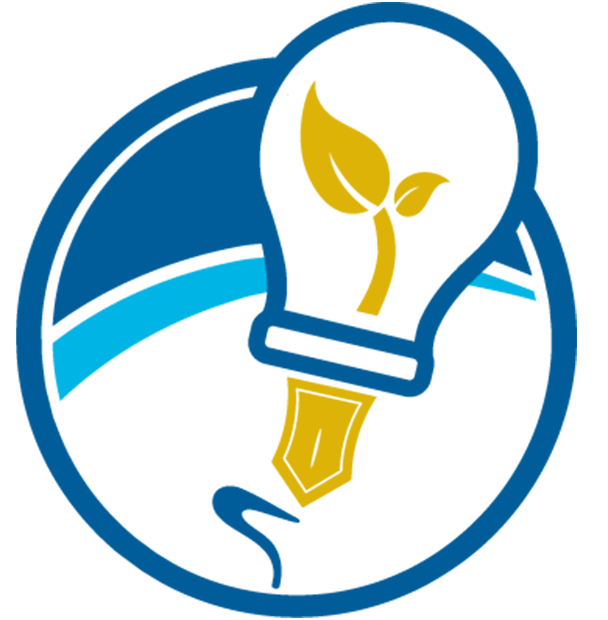
Jennie Ahn
JENNIE AHN, Senior, Biological Sciences, 2019
Research Program: IIFH
Faculty Mentor: Dr. Neelima Sinha, Plant Biology
Research Title: Improving the Fruit Quality in Tomato
Hometown: Daegu, South Korea
Three words to describe me: organized, hardworking, and passionate
What are your future plans and/or goals?
I want to work in biotechnology field to solve problems related to agriculture and human health. I hope to join researchers who conduct research to mitigate hunger and malnutrition that people face around the world.
In what ways has engaging in undergraduate research impacted your future goals and plans?
I was able to get an exposure to professional research in plant biology by working as an undergraduate intern in Sinha Lab. I learned how scientists design experiments, troubleshoot problems, communicate their results with others, and write papers to share their discovery. Another valuable experience I gained from the undergraduate research is that I learned the tools and techniques that are widely used in molecular biology and genetic engineering labs. I realized that what I learned in Sinha lab can be applied in many different labs that do not necessarily study tomato. I appreciate the opportunity to get involve in professional research and learn necessary tools to expand my interest in biotechnology.
What contribution(s) will your research make to your field of study?
Researchers in Sinha lab are interested in studying a wild relative of tomato, S. pennelli, which has 5X more fruit sugar than a commercial tomato, M82 cultivar. However, S. pennelli’s fruits are toxic, and the cultivation of S. pennelli on field is difficult. As a result, the researchers made a cross between the cultivated tomato M82 cultivar and the wild relative, S. pennellii, and made introgression lines that have genes mostly from M82 but contain small pieces of DNA from S. pennellii. One introgression line, BIL 260, contains a specific introgressed region of S. pennellii in chromosome 4 resulting in increased yield, fruit sugar, and altered leaf shape and vasculature. BIL 260 has 1.5X more yield than M82, and its fruit sugar level is significantly higher than M82. Since S. pennellii has high level of fruit sugar, it is hypothesized that the introgressed region of S. pennellii influences yield and BRIX in BIL 260. 
One of the genes originating from S. pennellii in BIL260 was a bHLH (basic Helix-Loop-Helix) transcription factor. I study how the expression level of bHLH gene differs in M82, BIL 260, and S. pennelli, and how the difference in expression affects leaf morphology and fruit quality of tomato. I hope my research can elucidate the function of this gene and provide a roadmap for producing sweeter tomatoes.
What preparation and research experience did you have before applying to your research program?
I was lucky to join Sinha lab by receiving an offer from a graduate student, Steven, who was my general biology teaching assistant. I was interested in working with plants in green house, and Steven kindly asked me to join the lab since he was growing tomato in a green house. I was a little worried in the beginning of the internship since I only had basic knowledge in biology. However, I learned a lot about science throughout the internship by talking to professors and researchers in the lab, listening to weekly lab presentations, and reading journals suggested by the professor.
Personal achievements/accomplishments or other news and information:
 I presented at the 2019 Undergraduate Research Conference, and at Plant Biology 2019 held by American Society of Plant Biologists
I presented at the 2019 Undergraduate Research Conference, and at Plant Biology 2019 held by American Society of Plant Biologists
What advice do you have for other undergraduate students seeking research experiences?
What allowed me to work in Sinha lab for two years is to be patient and communicative with people around me. In the beginning of the research, I was uncertain about what I was going to do in the lab. So, I tried my best with every work that I was assigned to do. Some tasks were laborious, and I couldn’t understand fully why I was doing the job. I bugged my supervisors with questions, made mistakes, and tried to do the job again. As time goes, I was able identify what I am interested in the lab and what I feel comfortable doing. I communicated my interest with my professor and graduate students and was able to focus on the research that I was interested in. It is important to invest enough time to discover your own likes and dislikes and strengths and weakness. When you have some sense of your direction, feel free to talk to people around you. There are always somebody who would listen to your words and try to help you to achieve your goal. Good luck!
What else would you like us to know about you?
Whenever I have downtime, I play ukulele and sing. This helps me to release any stress I have about school, relationships, and future.
